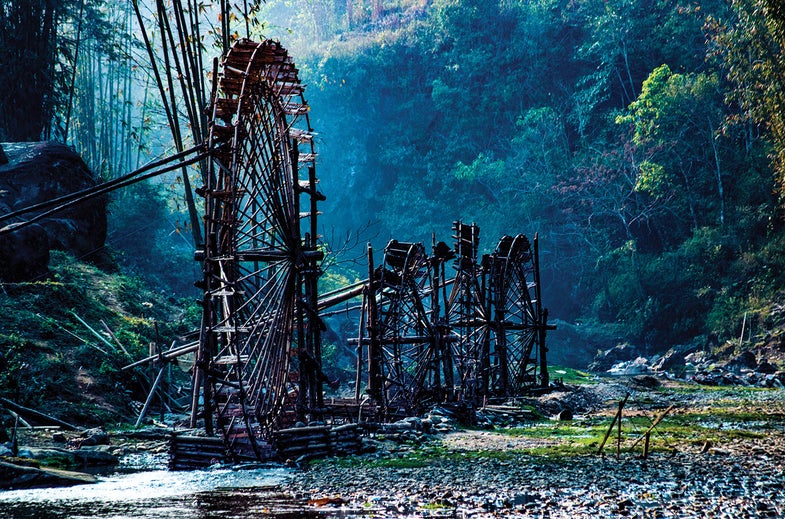Mentor Series: Sylvie Collier Captures Vietnam in Blue
A cool color cast adds interest to a photo


Last April, somewhere outside of Sapa, Vietnam, Sylvie Collier, a semi-retired real estate pro from the Houston area, crossed a creaky wooden pedestrian bridge with a dozen other Mentor Series trekkers. The Tien Sa waterfalls cascaded at their left, and at their right rested three antiquated, bamboo water wheels.
“The afternoon was really cloudy and it made for an incredible blue cast,” remembers Collier. Remembering the advice of mentor, David Tejada, she switched to the Tungsten white balance setting, designed to balance out yellowish lighting, and produced a bluer hue that better matched the tone of what she saw. “I’ve found that most of the time you have to scrap auto settings and experiment to capture a scene as you’re actually experiencing it,” she explains.
On an earlier trek, Collier had learned that repeating patterns make for good photographs. Their structure can solidify a composition, and if the objects are compelling in themselves—like these wheels—all the better. To highlight the pattern here, the photographer found a camera angle that presented each wheel clearly.
Other basic travel photography concepts that she keeps in mind:
• Capture both horizontal and vertical views of her subjects. Often the best is obvious, but it can’t hurt to experiment.
• Most scenes will benefit from wide-angle establishing shots, middle-ground views of definitive character traits, and close-ups of colorful details.
• Last, she advises, never stop looking. As she’s learned in dozens of photo critiques in our travel photography workshops, there are many ways to present every subject.
